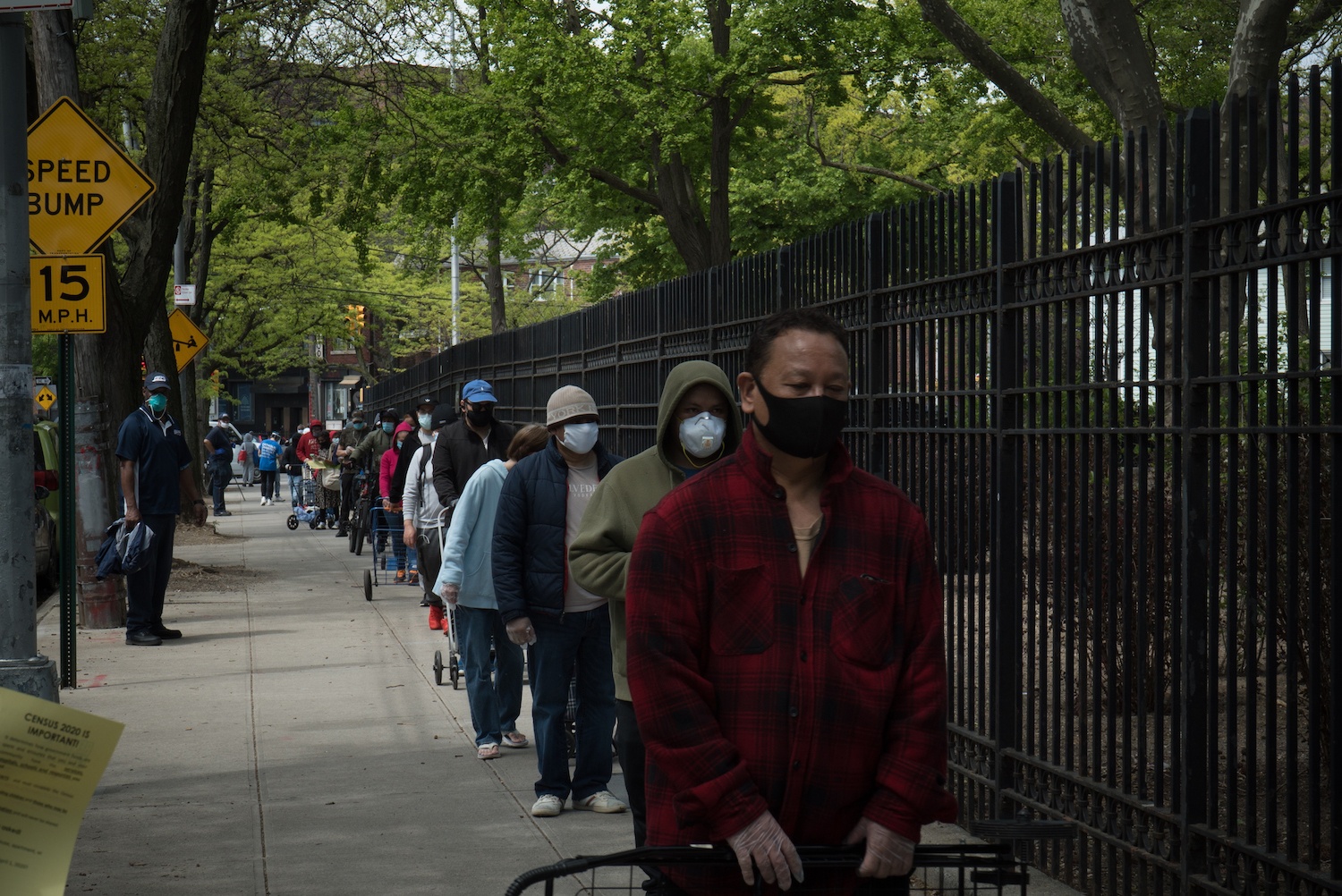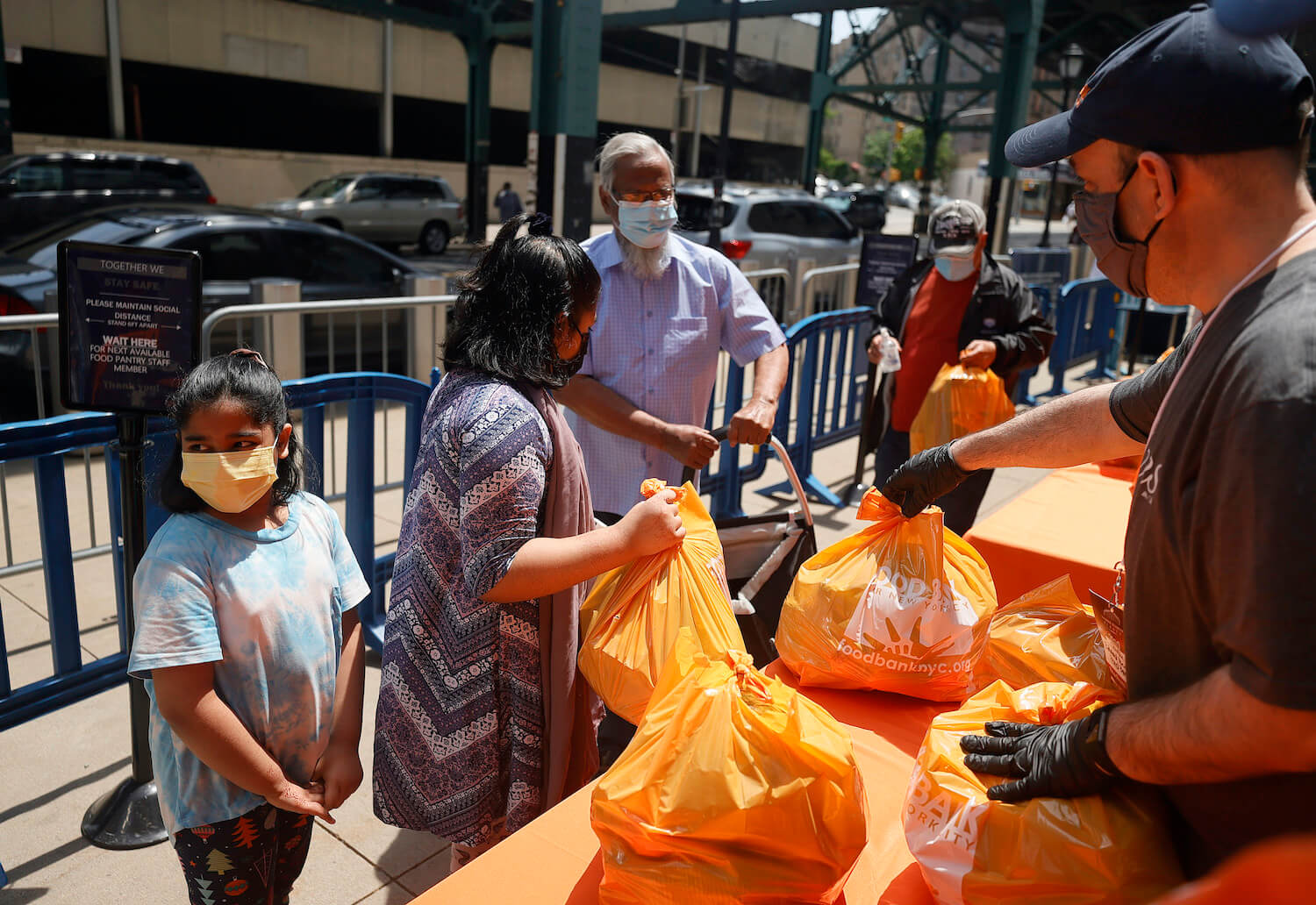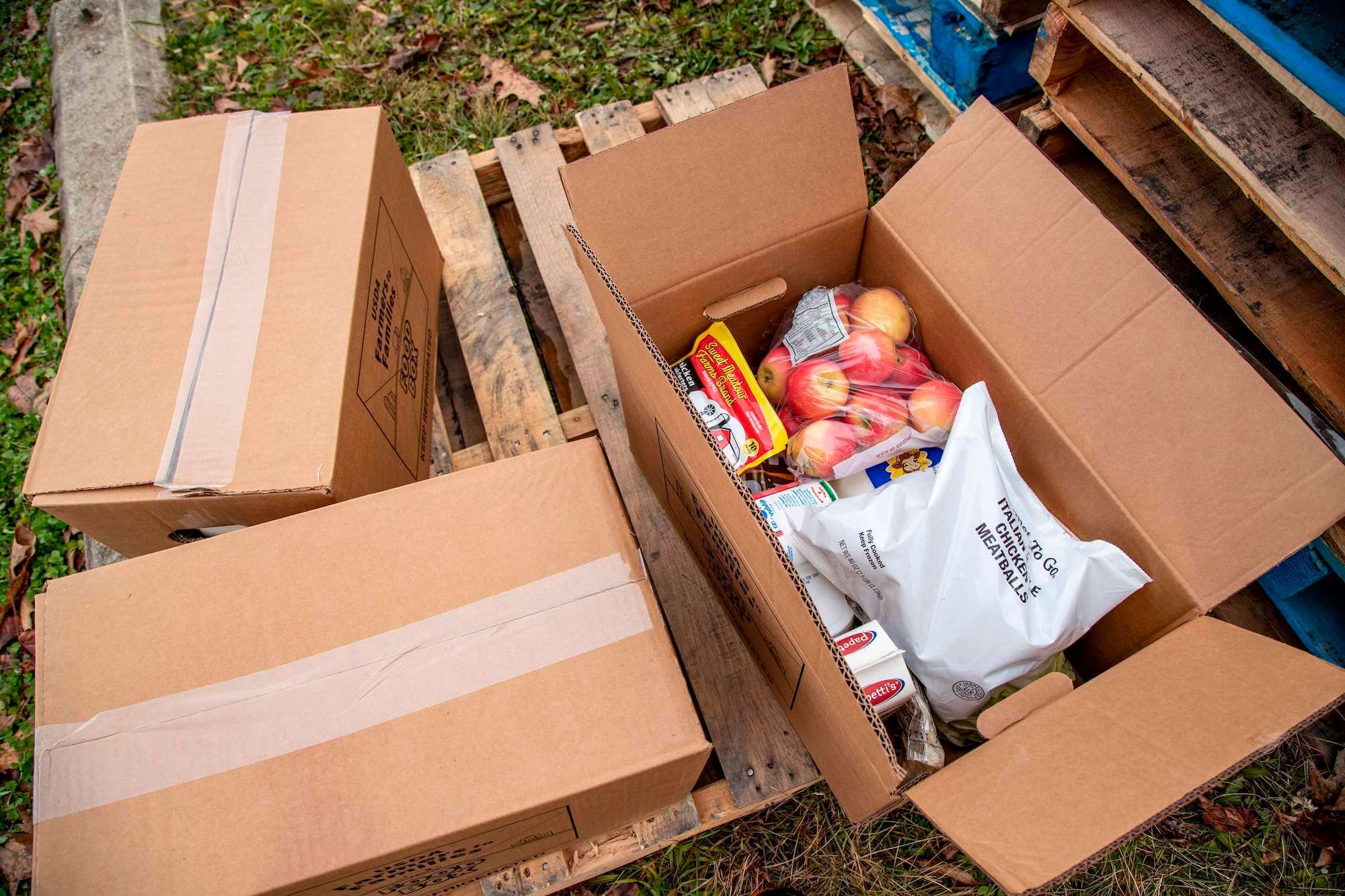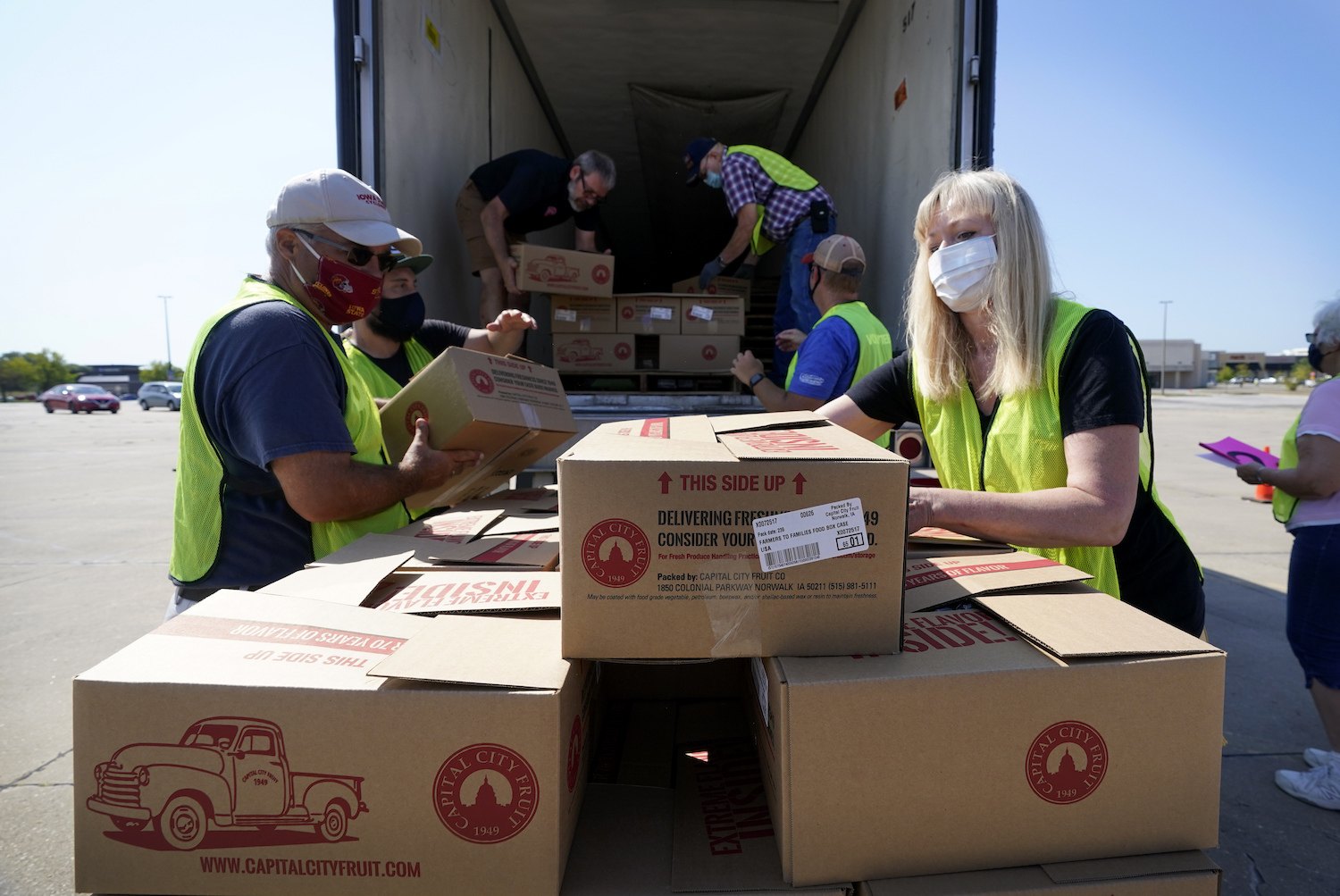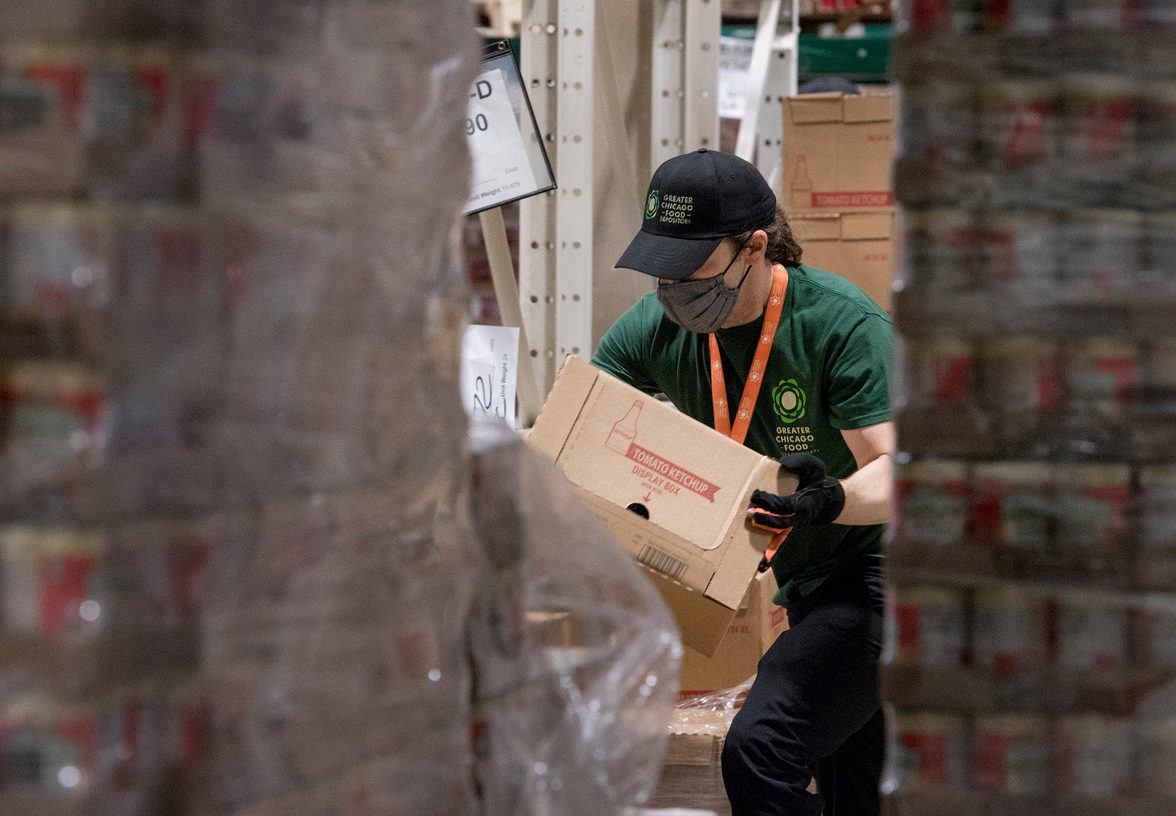
Investigate Midwest
New USDA data shows the overall food insecurity rate remained the same in 2020 compared to 2019. However, the rate increased for Black and Hispanic Americans. Researchers say more investigation is needed to understand the data.
This article is republished from The Midwest Center for Investigative Reporting. Read the original article here.
The COVID-19 pandemic was expected to drive many families into hunger as jobs were lost and supply chains were interrupted. The prediction held true, but mostly for people of color.
The nation’s overall food insecurity rate remained the same between 2019 and 2020, but Black and Hispanic households fared the worst, according to U.S. Department of Agriculture data released last month. Fewer white households’ struggled with food insecurity last year than the year before.
Experts attributed the steady rate to government programs, such as the Pandemic Electronic Benefit Transfer program (P-EBT), intended to fight hunger. However, some of these programs are slated to end next year, which has advocates worried about what could happen to families struggling to access food.
It was also too soon to say exactly what drove the racial disparities, experts said.
“We know that disparities have long existed in access to proper healthcare, healthy foods and other components that influence someone’s quality of life.”
For Black households, entering the pandemic with a lower median income and higher poverty than other groups likely contributed to the disparity, said Geri Henchy, director of nutrition policy at the Food Research & Action Center, which seeks an end to poverty-based hunger.
“We know that disparities have long existed in access to proper healthcare, healthy foods and other components that influence someone’s quality of life,” Henchy said.
The USDA defines food insecurity as the uncertainty of access to adequate food. For Black households, the food insecurity rate increased more than 2% in 2020 compared to 2019, according to the USDA. Hispanic households saw about a 1.5% increase.
In general, the pandemic forced more families with children to struggle with food insecurity. In 2019, the rate was 6.5%, and last year it was 7.6%.
Still, the overall rate of food insecurity reflected in the USDA report suggests that the pandemic response helped keep some families fed. The numbers contrast to the big spike in hunger that resulted from the Great Recession, from which the country took more than a decade to recover.
Some of the largest hunger relief organizations in the U.S., including No Kid Hungry and Feeding America, attribute the flat level of food insecurity to federal safety net programs and increased public and private funding for food banks during the pandemic.
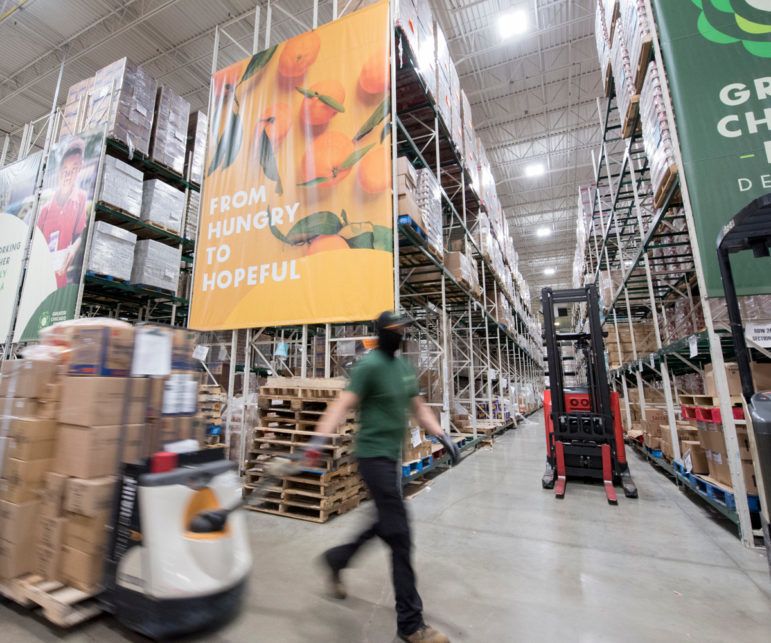
The Greater Chicago Food Depository in Chicago on Wednesday, Oct. 6, 2021.
Mark Black for Investigate Midwest
While the USDA report didn’t evaluate the impact of federal aid on food insecurity, U.S. Census Bureau data shows that stimulus payment and other aid lifted more than 11 million Americans out of poverty in 2020.
Henchy said many experts expected the report to show an increase in food insecurity, in part because the federal government’s 2020 Household Pulse Surveys — online surveys collected throughout the year asking about short-term food security, among other topics — indicated an increase in hunger during the pandemic.
Food insecurity hits people of color, older adults, people with disabilities, people experiencing homelessness and children harder, according to the Illinois Commission to End Hunger.
The USDA said more research is needed to understand the discrepancies between the various measures of food insecurity.
However, research has shown certain groups are more likely to be affected.
Food insecurity hits people of color, older adults, people with disabilities, people experiencing homelessness and children harder, according to the Illinois Commission to End Hunger.
Some programs extended beyond pandemic, others set to expire
At the beginning of the pandemic, as schools closed and hundreds of thousands of people lost their jobs, the USDA issued special benefits to combat hunger.
The P-EBT program issued cards to all families with children who would have received free or reduced-price school meals. Additionally, existing Supplemental Nutrition Assistance Program (SNAP) benefits were increased by 15% for all recipients, or by about $27 per month per person.
While the pandemic-related increase in SNAP aid ended Sept. 30, a permanent increase in assistance took effect Oct. 1, raising the average SNAP benefits more than 25 percent over pre-pandemic levels.
President Joe Biden’s American Families Plan would allocate $45 billion to fund programs including permanent summer EBT for all children receiving free and reduced-price lunch and expanding the Community Eligibility Provision.
Congress extended P-EBT for the current school year, but it’s set to expire in August 2022. Anti-hunger organizations like the Food Research and Action Center said they’d like to see this program, or a similar one, continue beyond the pandemic.
President Joe Biden’s American Families Plan would allocate $45 billion to fund programs including permanent summer EBT for all children receiving free and reduced-price lunch and expanding the Community Eligibility Provision, which allows schools with high poverty rates to provide free meals to all students, by increasing reimbursements for schools participating in the program and lowering eligibility requirements for elementary schools.
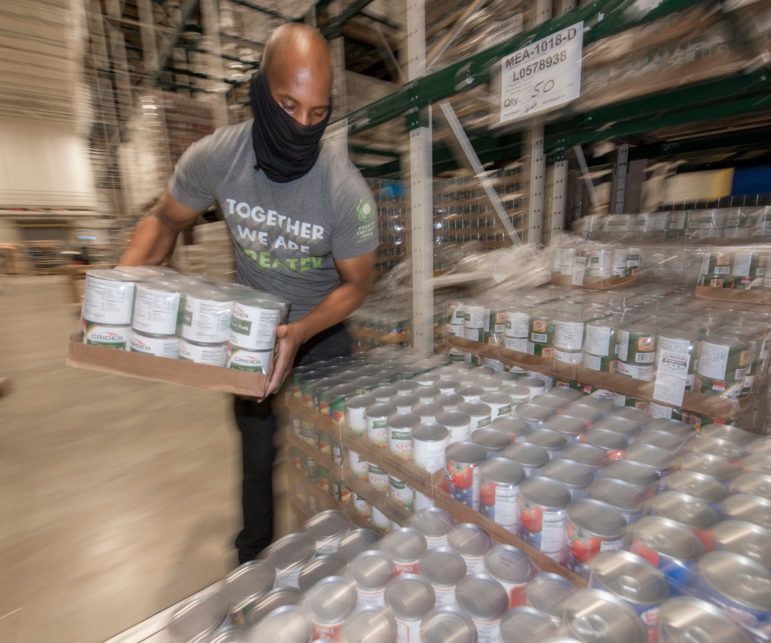
Employee Jimmy Flournoy loads a pallet with can goods at the Greater Chicago Food Depository in Chicago on Wednesday, Oct. 6, 2021.
Mark Black for Investigate Midwest
Provisions to extend summer EBT and the Community Eligibility Provision are included in the Build Back Better Act, which is being negotiated in the House of Representatives.
As long as COVID-19 remains a public health emergency, the Special Supplemental Nutrition Program for Women, Infants, and Children (WIC) is accepting remote applications and delivery of benefits. Applicants previously had to apply in person.
The USDA also spent $6 billion on the Farmers to Families Food Box Program with the goal of supporting farmers, retaining jobs for contractors and delivering fresh foods to families in need. The food box program delivered 176 million food boxes to recipients around the country, but the agency didn’t collect enough data to evaluate the extent to which the program achieved its goals of retaining jobs and supporting farmers, according to the Government Accountability Office.
The USDA also spent $6 billion on the Farmers to Families Food Box Program with the goal of supporting farmers, retaining jobs for contractors and delivering fresh foods to families in need.
The USDA discontinued the food box program in May. In addition to the lack of data collection, The Counter identified a number of issues with the system, including inexperienced distributors, food banks that never received deliveries, and prices well above retail.
“We’re going to continue to provide healthy food but we’re going to do it through the most efficient system that we have. The reality is the food box program was set up to respond to COVID. There were a lot of problems with it, a lot of problems,” Secretary of Agriculture Tom Vilsack said in an April congressional hearing.
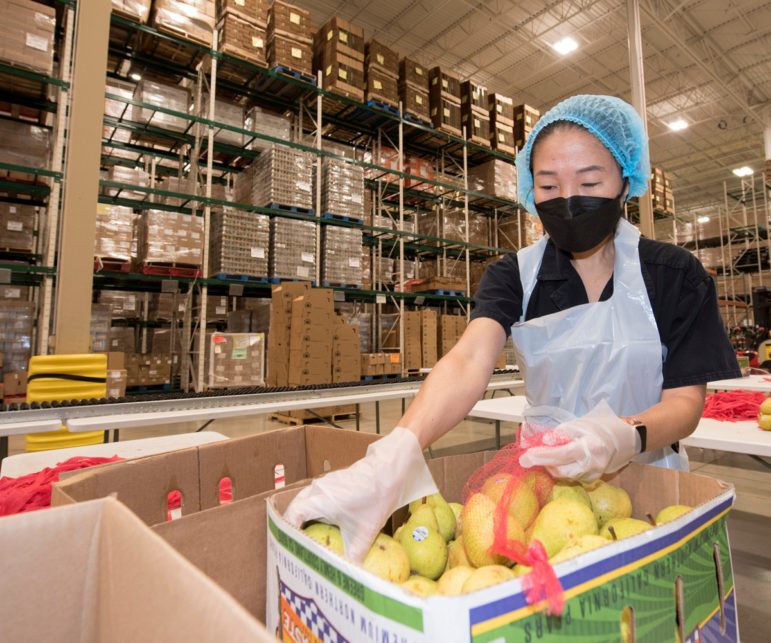
First time volunteer Eliza Chu of Chicago bags up pears at the Greater Chicago Food Depository in Chicago on Wednesday, Oct. 6, 2021.
Mark Black for Investigate Midwest
Hunger in the Midwest
In the Midwest, the food insecurity rate actually declined, from 10.5% in 2019 to 9.5% in 2020, according to the USDA’s report. Food insecurity in the region is considered “significantly” below the national average.
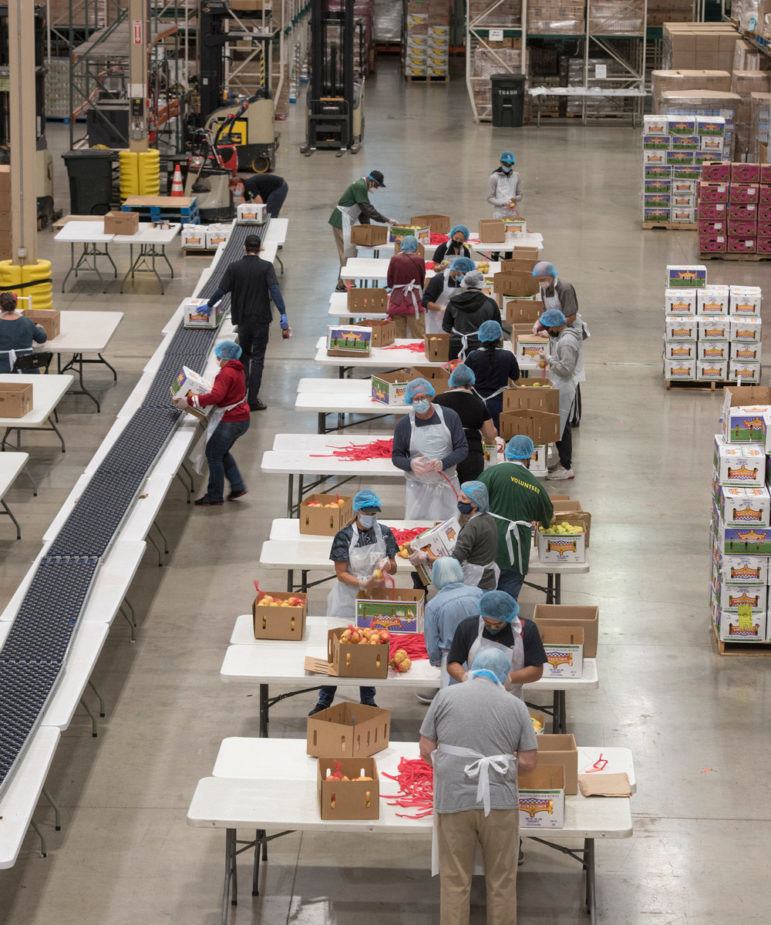
Mark Black for Investigate Midwest
Volunteers bag up pears at the Greater Chicago Food Depository in Chicago on Wednesday, Oct. 6, 2021.
Illinois was among the 15 states — including four others in the Midwest, Iowa, Minnesota, North Dakota and South Dakota — where food insecurity was reported lower than the national average. From 2018 to 2020, the average percentage of households that experienced food insecurity was 9.2%.
However, while the numbers are comparatively low, many still had to turn to government assistance to feed their families.
In Illinois, the number of applications to enroll in SNAP soared during the initial months of the pandemic, according to the Illinois Commision to End Hunger, from a weekly average of under 9,000 to a peak of over 35,000. Nationwide, SNAP last year aided 41.6% of Americans that experienced food insecurity.
“We’ve even seen that at our food banks and our agencies across the state that months ago some of the demand started to level off,” said Steve Ericson, executive director of Feeding Illinois. “And I think the conclusion was — amongst our group anyway — that some of these benefits were kicking in, from child tax credits to SNAP increases to things like that.”
“These types of investments really do make an impact.”
Laura O’Carroll, public policy manager for the Greater Chicago Food Depository, a food bank that’s part of the Feeding America network, said the federal food safety net had a tremendous impact in Illinois, particularly the P-EBT program. She said Illinois was one of the first states to roll out the program, and the “strength” and coordination of state agencies contributed to the food bank’s ability to respond to demand.
“This new USDA report, I think, really underlines how impactful that is, how we can fight hunger,” O’Carroll said. “These types of investments really do make an impact.”
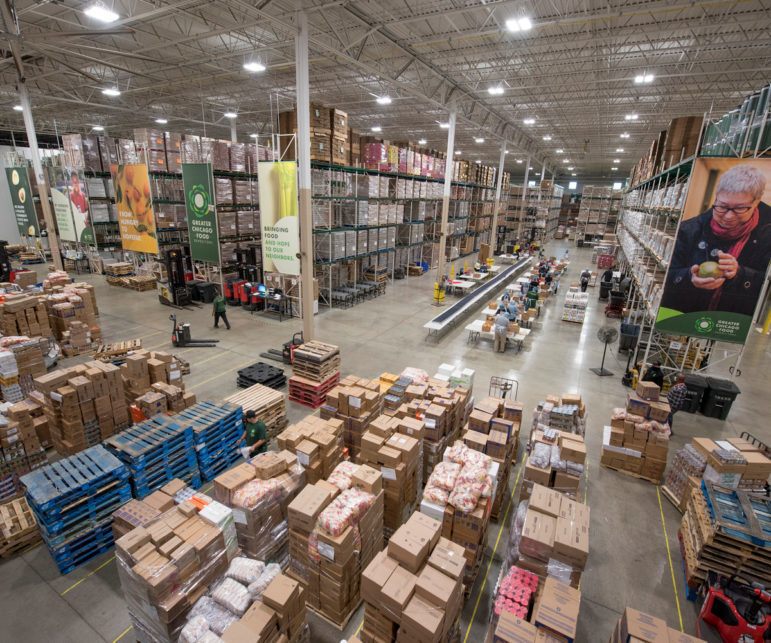
The Greater Chicago Food Depository warehouse in Chicago on Wednesday, Oct. 6, 2021.
Mark Black for Investigate Midwest
Illinois-based hunger groups had previously warned that the pandemic would exacerbate food insecurity across the state. A report projected that about 180,000 more Illinoisans would struggle with hunger this year compared to 2019, especially in rural areas in southern Illinois.
To end food insecurity in the state, the Illinois Commission to End Hunger said in a report published last March that the first step would be to “ensure that nutrition assistance programs are accessible and fully leveraged, and to make sure that people have access to affordable, quality food in their communities.”
The commission recommended using technology to connect people with benefits, finding new and better ways to help programs reach more people, and working collaboratively with state agencies and organizations to promote program awareness.
A report projected that about 180,000 more Illinoisans would struggle with hunger this year compared to 2019, especially in rural areas in southern Illinois.
As the pandemic lingers on, Ericson doesn’t know what comes next. The lessons learned from the first months of the pandemic, he said, have readied Illinois’ food banks to respond with mobile food distributions if measures like shelter-in-place orders were to be reinstated. Illinois’ food banks, he added, “are well prepared and anticipating somewhat of an increase here.”
“We’re always concerned (about) what’s going to happen next, regardless if it’s the program ending or what tomorrow is going to bring, because who knows?” Ericson said. “Sometimes you don’t know what the full effect will be until it happens, so we’re kind of holding our breath, but we’re also trying to be prepared.”


